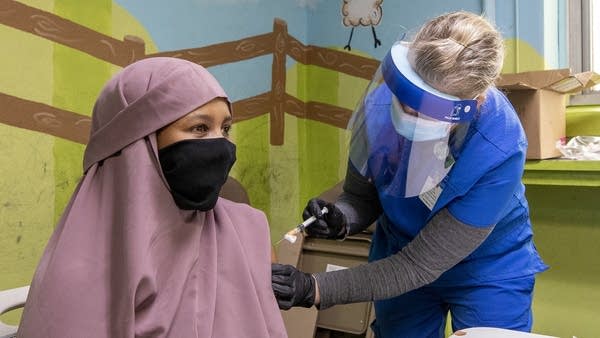Latest on COVID-19 in MN: Trends solid; Walz eyes 'close to normal' State Fair

St. Cloud, Minn., resident Ilhan Ali holds steady as nurse Kris Kobienia administers a vaccination shot for COVID-19 earlier this month at the Islamic Center of St. Cloud.
Paul Middlestaedt for MPR News file
Go Deeper.
Create an account or log in to save stories.
Like this?
Thanks for liking this story! We have added it to a list of your favorite stories.


